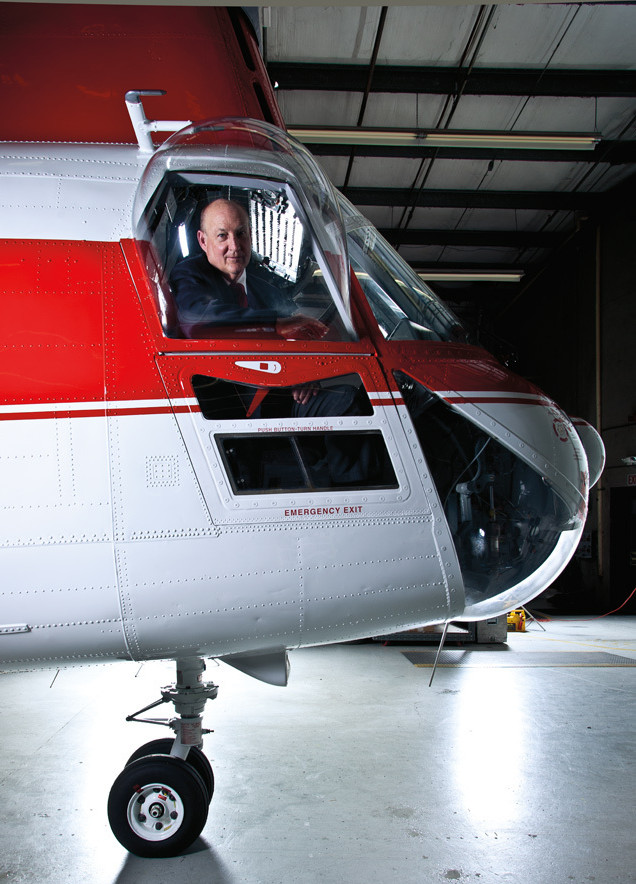Columbia Helicopters Turns to Nation Building

Image: Michael Schmitt
When Mike Fahey became president and CEO of Columbia Helicopters in 1999, the company’s fleet of 18 huge choppers still did the same job it had done since 1957: hauling 4,500-ton stacks of timber to and from remote areas around the Northwest. Logging-related missions accounted for 75 percent of the firm’s business. But by the late ’00s, increased forest fires, environmental legislation, and other factors threatened the Aurora-based company’s niche.
“Logging was still a big part of our business until 2008,” says Fahey, “but it was getting smaller all the time.”
That year’s housing collapse devastated the timber market, forcing Columbia to shed 140 workers. Fahey, who graduated from Portland State in 1966 and joined the company in 1975, decided to shift focus to clients who would want his business for the foreseeable future: the US military and far-flung countries with acute development and infrastructure needs.
Today, five of Columbia’s current 21 aircraft fly in Afghanistan, hauling supplies, and food and providing logistical support to US troops. The military has its own heavy-lifters, of course, but Fahey offers Uncle Sam a high level of service: a squadron of repairmen and technicians who follow each aircraft on deployment, allowing Columbia’s machines to log two or three times as many flight hours as army choppers.
Nation-building and customer service put us on a whole new level.” —Mike Fahey
In 2006, Fahey made the bold decision to purchase the blueprints of the company’s helicopters—the 107-II and the 234—from Boeing for a substantial (but confidential) price, giving Columbia full control over the choppers’ complex innards. “It allows us to do all sorts of things: modify the aircraft, eliminate markups, have our own engineering department,” he says.
This two-pronged approach—deploying helicopters and technicians simultaneously—has brought breathtaking growth, with additional interest coming from Thailand, Spain, Australia, and Singapore. Columbia grossed around $175 million annually before the recession, a figure projected to surge past $225 million this year. The company has grown 30 percent over the past two years, to 800 employees, with 50 more expected by year’s end.
Today, Columbia’s Aurora complex is a labyrinth of machine shops and test chambers. In each room, blue-suited mechanics dissect massive choppers, from circuit boards to rotor transmissions. “We’re in demand,” Fahey says. “We reinvented ourselves. We became something else.”



